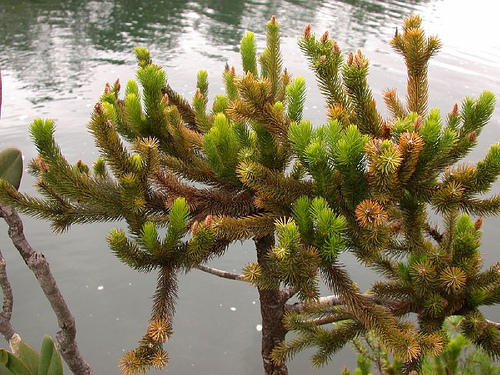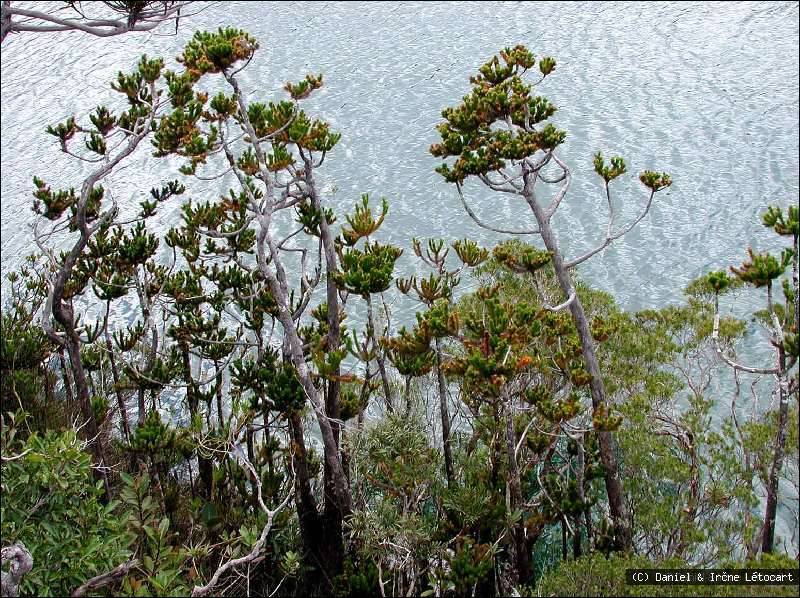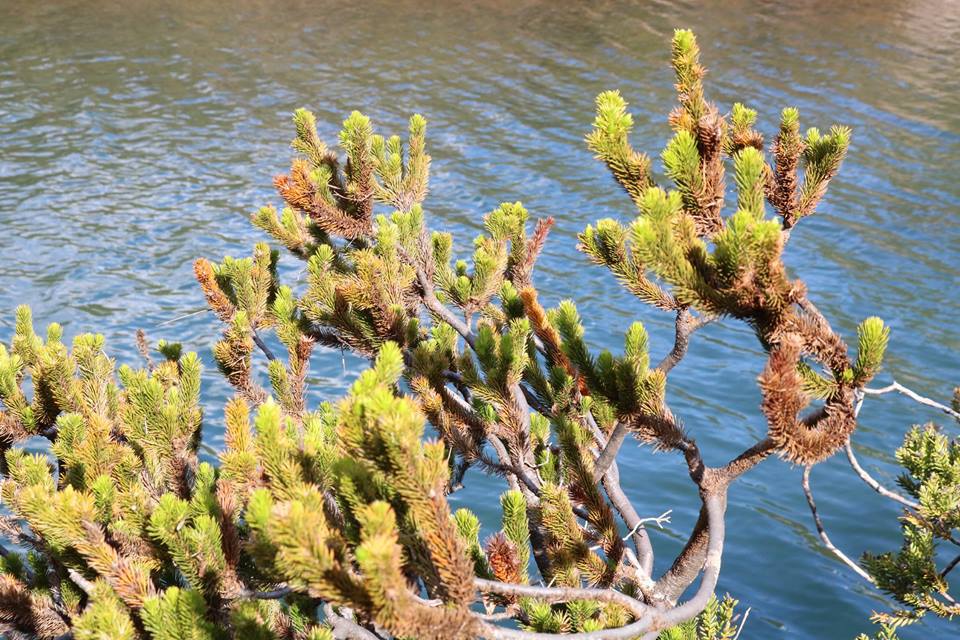Dacrydium guillauminii, as described in 1949 by John Theodore Buchholz (1888-1951), in Bulletin du Muséum d'Histoire Naturelle, sér. 2, is commonly known as Cat-tail Rimu, Swamp Dacrydium as well as Queues de Chat in the French language. The species name honors André Guillaumin (1885 - 1974), one of the pioneers in the study of the flora of New Caledonia. He collected some of the original herbarium samples for use in botanical study.
Description. Cat-tail Rimu is an evergreen coniferous species of tree in the Podocarpaceae family, growing as a small erect shrub, 3 to 6 feet (1 - 2 m) in height.
Hardy to USDA Zone 10, cold hardiness limit between 30º and 40ºF (-1° and +4.4°C).
The IUCN reports that this taxon is critically endangered, facing an extremely high risk of extinction in the wild. It has an extremely restricted range of less than 100 km2 that is severely fragmented or known to exist at only a single location, and that is suffering a continuing decline in extent and/or quality of habitat and in the number of mature individuals. The total population size numbers fewer than 250 mature individuals and is continuing to decline, with no sub-population estimated to contain more than 50 mature individuals.



